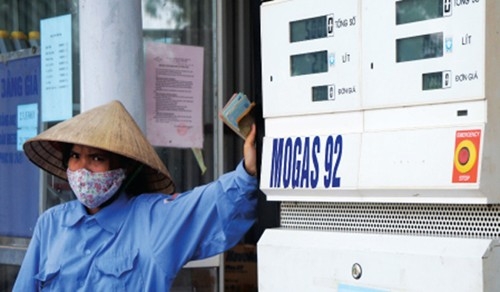|
MOIT to allow more petroleum
distributors to join the market
Four
enterprises, which are private businesses and joint stock companies, have got
the licenses from the Ministry of Industry and Trade to operate as the
petroleum distributors in the domestic market. The number of the distributors
would still be rising.

All the existing petroleum distributors complain that
they incur losses because they have to sell products below the cost prices as
requested by the government. However, none of them intends to leave the
market.
What the government and people hear most from petroleum
distributors are that the distributors incur loss and insist on the selling
price increases.
Holding more than 90 percent of the market share, the
big guys including Petrolimex, PV Oil, Mipec, Saigon Petro, Dong Thap Oil and
Gas Trade Company have been dominating the market.
17 and more
With the licensing to the new four enterprises,
The threshold would be exceeded in the near future, as
some petrochemical and oil refinery investors have seen the “green light” on
to them to set up petroleum trade companies.
Under the
The Nghi Son petrochemical and oil refinery project, in
which foreign investors hold 75 percent of the stakes, and the 100 percent
foreign invested Vung Ro Oil Refinery project, for example, have got the nod
from the government to set up distribution companies which would distribute
the products to be churned out by them.
Nghi Son expects to become operational by 2017, with
the capacity of 10 million tons of crude oil a year. Vung Ro would run at the
capacity of 8 million tons. Once Nghi Son is put into operation, the domestic
production would be sable to satisfy 60 percent of the domestic demand. If
so, the competition among the distributors would become stiffer.
Who will define the selling prices?
It would always be a very difficult task to define the
retail petroleum prices.
The government’s Decree No. 84 stipulates that the
selling prices would be defined based on the market supply and demand, and
with the state’s management. The distributors have the right to set the
selling prices. However, the decision on the next price increase must be made
at least after 10 days since the previous price adjustment. In case the
import prices decrease, the distributors must lower the selling price no
later than 10 days.
However, since mid-2012, state management agencies
decided to regain the power of setting the retail prices from the petroleum
distributors after a long time of giving the power to them.
The big guys in the market -- namely Petrolimex, or PV
Oil, of course, don’t want to lose the power. They have repeatedly insisted
on the right to define the selling prices themselves, which would allow
raising the retail prices as soon as the import prices increase; with no need
to ask for the management agencies’ permission.
Source: Doanh Nhan
|
Thứ Hai, 17 tháng 6, 2013
Đăng ký:
Đăng Nhận xét (Atom)
Không có nhận xét nào:
Đăng nhận xét